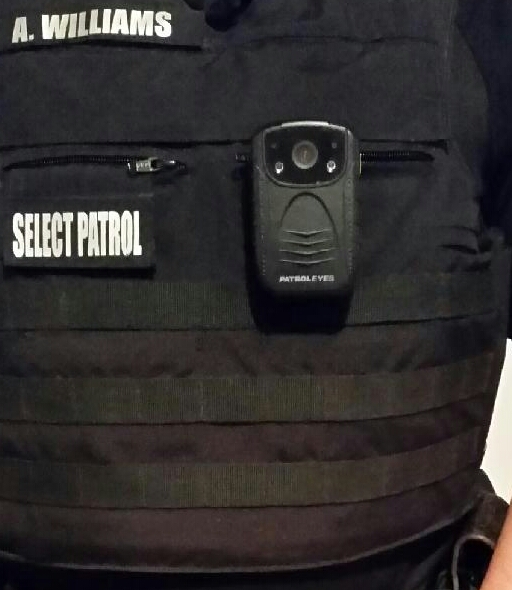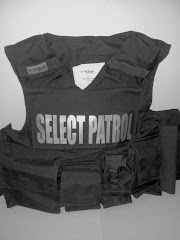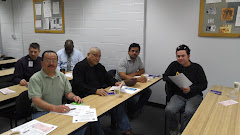I HAD DECIDED to equip my patrol employees with body cameras
. I had been aware of body cams for sometime, and I knew that somewhere
down the road we would have them. However, a recent event that involved one of
my employees accelerated the process.
THE EVENT that kick-started my move towards cameras occurred early one
Saturday morning after 2:00AM. We
provide nighttime patrol for a large church campus in the San Gabriel Valley. My
patrolman, Hector, (pseudonym), happened upon a man who had built something of a shelter from
a cardboard box and was presumably asleep inside. This was within the walls of
the sanctuary courtyard and the man and his "fort" had to go. However, no sooner
had the patrolman called out to the sleeping man inside the box, when suddenly
the box flew off and Hector was immediately set upon by a burly man in his 20s
who came at Hector with clenched fists. Fortunately, Hector is an experienced
patrolman and had positioned himself to his best protective advantage; he stood
over 20 feet away from the encampment and held is chemical defense spray at the
ready.
As soon as Hector's assailant came within the 20 foot perimeter the man was
hit with a steady burst of 1.3% Oleoresin Capsicum and the assailant was halted
in his tracks. At that, the man turned heel and stumbled out of the courtyard
and to a motel across the street. There, he used the lobby desk phone to call
the police claiming that he had just been "attacked by a security guard".
Now, what usually happens in circumstances such as these, the police
generally regard the first person to make the call to be the "Victim" and the
other party involved to be the "suspect". The police arrived within a few minutes
along with a paramedic unit to de contaminate Hector's attacker of the
residue OC particulates. Predictably, the man told the officers that Hector
approached the man as he slept on the pavement , and hosed him down with pepper
spray without warning.
The
officers then approached Hector and he gave the officers his account of what
happened. Hector sensed the officers were familiar with his attacker and were
not buying the sprayed-while-asleep story. On the other hand, Hector did not have anything or anyone to corroborate his account of how things went down.
Good New/Bad News
Good New/Bad News
The outcome of the police officer's investigation had mixed results. The
good news for my employee Hector was that he was not taken into custody on the
dubious word of his attacker. The bad news was Hector's attacker also
avoided jail time. Given the circumstances, this outcome is not unusual. In my
30 plus years in the private security field it is more or less standard practice
to for police officers to handle similar incidents as mutually contentious
"fights" as opposed to a self-defense action on the part of the security
officer. It is a default position law enforcement will check when corroborative
evidence is not available.
The right tool for the job
The right tool for the job
Clearly, as the above incident illustrates our need is for a camera that
above all allows the patrolman to view recorded events in real time. After
researching the available products on the market I chose the Patrol Eyes
SC-DV1.
The device is loaded with advanced features and is very user-friendly. The
video camera offers instant play-back and displays 1080 dpi video on a two inch
wide LCD screen located on the back of the device. The instant play-back is
probably the most useful feature as it eliminates the need for a patrolman to
have to scroll through batches of video clips to find the one he needs at a
critical moment.
The camera can also shoot still photos in 16 megapixel quality . Both video
and still images can be shot in infared mode with the press of a button located
on the side of the device. Additional clip-on wide angle camera lenses in both
infared and daytime modes can be purchased separately for about $150.00 a piece.
These are only the highlights of the many features offered by the Patrol
Eyes SC-DV1. Lastly , I will say the price was very easy on my eyes. (under
$250.00 per unit). I believe the Patrol Eyes will be the standard for many
private security organizations based on its price.
In researching policy guidelines for the body cameras I found law
enforcement sources supported the concept of allowing police officers
descretionary authority to record or not to record within policy prescriptions.
For example, officers could turn off the camera in casual conversation or when
interviewing witnesses who may be concerned about confidentiality. Similarly,
most sources agreed that officers ought to be able to review video following an
incident.As I had mentioned previously the instant play-back feature of our
camera of choice was the deal maker as far as I was concerned. For the private patrolman
who finds himself surrounded by skeptical police following an incident,
the patrolman must have the ability to produce video evidence that will
immediately exonerate him. Otherwise, in the absence of such evidence, he
will likely find himself suffering the indignity and potentially
hazardous circumstance of being taken into custody in uniform for further questioning at the police headquarters.
Overall, the policy considerations were pretty straightforward; patrol staff cannot erase or edit any video clips. Unless a particular video loop is needed for either a criminal investigation or client-related inquiry, all videos are erased from our system after a 30 day period.
I will write a follow up article once our program has been implemented company wide and share our experiences.
DW
I will write a follow up article once our program has been implemented company wide and share our experiences.
DW









